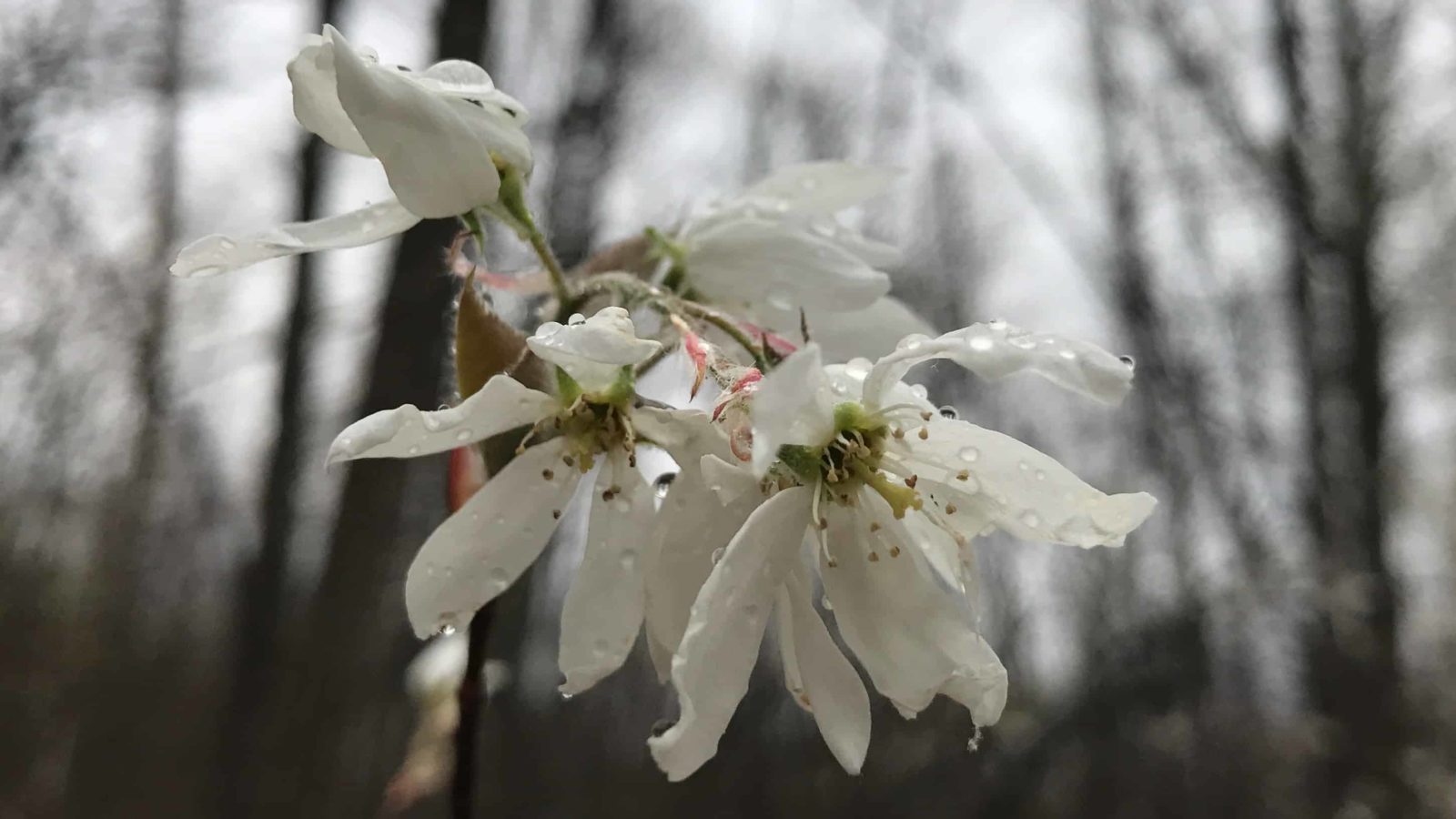Are these shad blow? Because they’re all over up here. I ask my mother, because she taught me shad bush, serviceberry, years ago, walking the plank walk in the marshy hollow of the woods at the end of our street. But today I ask her by phone, because I’m standing halfway up Pine Cobble.
I pull the phone out of a plastic bag in the pocket of my wool sweater — weatherproofing. The rain has let up, and I’m taking a chance. I’ve been itching for days to get into the woods, since the bloodroot came into bloom along the river near my house.
This is wildflower season, when the ground thaws and sunlight touches the earth. Trout lilies will be opening along the Taconic Crest, and local guides are leading walks at Bartholomew’s Cobble. Early in spring, I spent a snowy morning listening as they talked about walking ferns and wake-robin and why they spend so many hours teaching people the names of blossoms, and who taught them.
Up here, above the valley, I’m finding new growth but no flowers on the ground. I’ve come to the top of the first rise, and I’m walking north through young woods. The trail levels out here, and I realize the ridge I am walking toward is still part of the climb.
Drops sound on the bare branches and buds and a few new leaves. They grow firmer and more rapid, and the rain is coming. I’m halfway up now, and I’m going to get wet. But I’m warm with the climb, and wool is water-resistant. So I stride along with rain in my hair, and the shower comes and fades. It’s not a true soaking rain, just enough to cool a salamander, and I miss it when it’s gone.
And this is when I find the blooming trees — these low-growing saplings are suddenly spread along the path on both sides. I come close to look up at the light petals still holding beads of water.
I remember years ago, walking barefoot on the AT in the white Mountains, my friend Doone told me the name Serviceberry came from the wandering preachers who would come to remote towns to hold services, times of worship, and the bushes bloomed when the weather warmed enough for them to travel. Shadblow comes from the silver shad fish swimming upriver from the sea to spawn. Once our rivers would have been thick with them, this time of year.
Shadblow are one of my first signs of spring too. I’ve known them as long as I can remember. But I didn’t know they grow here like this. And I don’t know when I last stood nose-to-nose with a shadbloom and looked closely, wanting to be sure I had the familiar shape right. It’s like running into someone I went to school with years ago and fishing for a name.
I’m damp and grinning when I pocket the camera and head on up the hill. In Japan, I’m told, from March to May people will watch for cherry blossoms the way we watch for fall leaves; it’s called Hanami, enjoying the flowers that come and go. I wish we had that kind of tradition, that lilacs opening or azaleas in Pittsfield State Forest would make the daily news. But we have wildflower walks and my friend Thom Smith to remind me the columbine and trillium may be out in the Southern Berkshires already … and we have serendipity, when I go looking for it.

